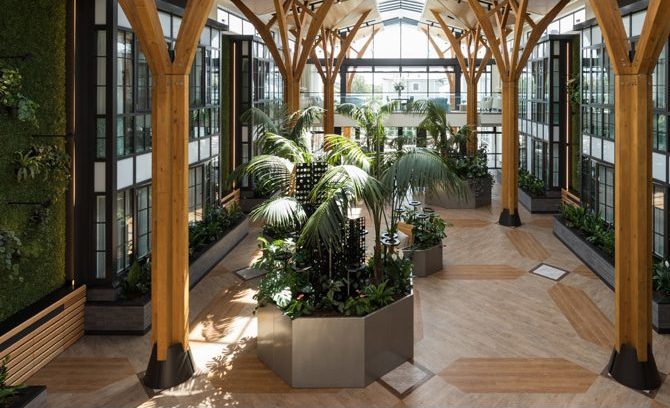Hospitals, clinics and medical offices have a unique set of demands when it comes to flooring.
Healthcare flooring projects require specialised materials to deal with the heavy volume of daily foot traffic, plus these spaces demand a higher standard when it comes to cleaning. Simply put, quality healthcare flooring needs to be durable, hygienic, easy-to-maintain, comfortable underfoot, and strong enough to withstand heavy foot traffic. Here, we share our complete guide on choosing the best flooring materials to use within a healthcare facility.
Factors to consider
- Location – Areas within a healthcare facility will serve different purposes and face different pressures. As such, you need to choose flooring materials specific to the location in which they will be used. Take note of the different factors such as rolling loads and accumulation of bacteria when deciding which flooring is most suitable for each area.
- Fall hazards – The right flooring will help minimise the risk of fall hazards. It’s crucial to choose flooring that’s slip-resistant, easily cleaned, and has a low reflective value to prevent glare, and reduce accidental trips and falls.
- Minimal risk of infections – There’s a good reason why carpets are rarely used in large, full-service hospital settings—the use of carpets poses a greater risk for bacteria to thrive. We suggest using impermeable flooring materials that can withstand deep cleaning to mitigate the risk of spreading infections.
Types of healthcare flooring
Here are our recommendations for flooring commonly used in healthcare settings.
- Luxury vinyl tile – LVT’s are a resilient flooring material that are famously low maintenance and built to last. They are easy to install, durable, waterproof (when installed correctly), and perform well in high traffic areas. It’s also a versatile option, featuring varied designs, colours, and textures.
- Sheet vinyl – A flooring staple in hospitals, sheet vinyl is an impervious flooring that is easy to clean and maintain. It’s also a great option for repelling microorganisms on surfaces and can be a waterproof surface. Particularly important is the ability to cove vinyl flooring up walls, allowing for heavy and regular deep cleaning.
- Rubber – Rubber flooring is also a popular option in many healthcare facilities. It provides unparalleled durability and seamless installation as well as versatile design possibilities. Because of its dense surface structure, rubber can withstand tough hospital conditions without compromising style and is a more comfortable option for medical staff required to stand for countless hours across the day.
- Linoleum – Just like rubber, linoleum is also popular in hospital settings for its durability and environmental benefits—made from natural materials with inherent antimicrobial properties to protect against germs.
Flooring recommendations for each area
- Entrance areas
Entrance areas are a crucial part of a healthcare facility as they are the first area patients and visitors see. They assist in helping individuals locate rooms and they also deal with the heaviest foot traffic. Luxury vinyl floor tiles work well in entrance areas as they create an inviting environment that’s versatile, easy to maintain, is wheel-friendly, and can withstand the heavy foot traffic expected in receiving and entrance areas.
- Corridors
Corridors or hospital hallways also take a beating. They are constantly used by hospital staff and they deal with heavy rolling loads from stretchers, medical carts, and wheelchairs. As such, the most ideal flooring option for these areas requires minimal maintenance and must not wear too fast. It also helps to choose patterned flooring to assist wayfinding and identifying care areas. Rubber flooring and vinyl are two of the most ideal options that meet all of these requirements. They’re easy to install and can both come with protective coatings to limit scratching and reduce maintenance.
- Emergency or procedure rooms
Operating and procedure rooms require the strictest infection control requirements to make them usable 24-7. Flooring that’s easy to clean and that has a smooth texture can help with ease of maintenance so that floor surfaces stay hygienic at all times. Linoleum and vinyl are commonly used in these areas because of their heat welding process during installation. The use of heat welding and wall coving make it possible to create a space that can handle intensive cleaning. In addition, these materials can come with coatings that protect from chemical staining.
- Patient rooms
Naturally, patients would want their hospital stay to be as comfortable as possible. Creating a warmer look and feel in patient rooms is important in reducing stress and promoting a faster healing process. Sheet vinyl or LVT are great options to use in patients’ rooms, as they can be used to create a warm, inviting setting that can emulate home-like environments.
Flooring tailored to your healthcare environment
As commercial flooring specialists, we can supply and install the most suitable flooring solution specific to your healthcare facility. Whether you’re working on a full-service hospital or a private practice looking to build or refurbish, we offer tailored flooring solutions that will meet the demands of your healthcare facility. Talk to us about your healthcare project today!



